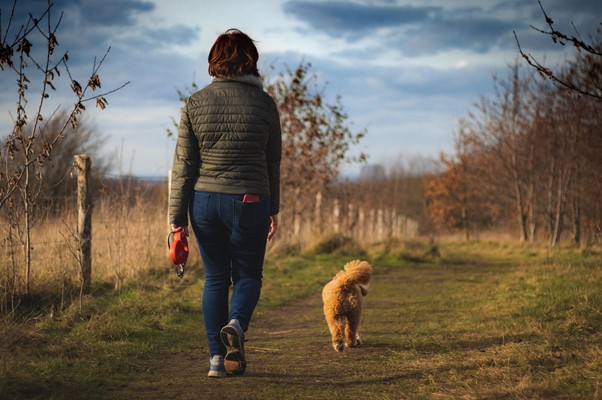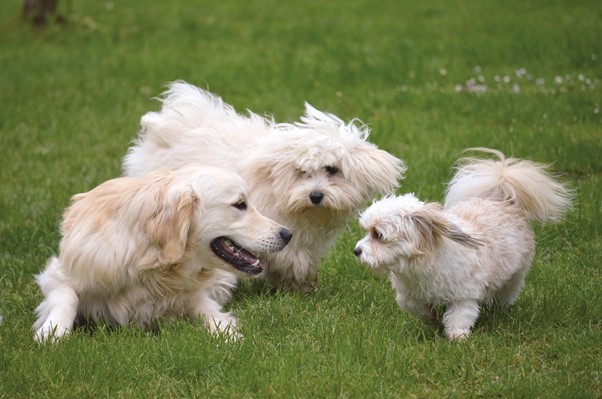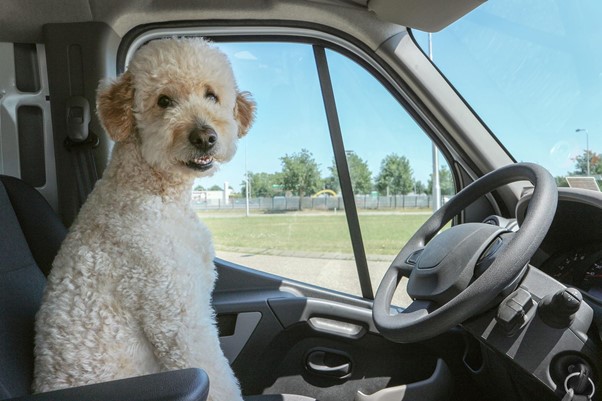Step-By-Step Guide To Introducing A New Pet To Your Dog
- Last updated on April 6, 2023
- By: Caroline Stowe
So, you’ve decided to add another pet to your family. You’ve done your research and chosen the perfect companion for your pup—now it’s time to introduce them.
Adding a new pet to the family is an exciting but nerve-wracking endeavor. After all, introducing a new animal into the mix can be tricky and requires patience, understanding, and knowledge of best practices.
From setting the tone for their first meeting to creating a safe space for both of them, this guide will walk you through every step of introducing a new pet to your dog.
In this blog post, we’ll walk you through the steps of how to introduce a new pet to your dog, so that both pets can enjoy a safe and healthy environment with plenty of love and attention.
The Benefits of Adding a New Pet
Introducing a new pet into your home can be an exciting experience for both you and your existing dog.
Adding a companion can not only enrich their daily life but also provide them with plenty of opportunities for playing together and forming strong bonds.
In addition, having a companion can help to reduce stress on your dog, make them feel secure and loved, and provide ample opportunity for learning new skills.
Some more benefits are as follows.
- A new pet can be a fun friend for your dog to play with.
- Having a companion can help your dog feel more secure and loved.
- Playing together will create strong bonds between them.
- A new pet can reduce stress on your dog.
- It gives them an opportunity to learn new skills and behaviors, like how to share and take turns playing with toys or treats!
- Your existing dog will have another companion in the house to keep them company when you’re away or busy doing other things around the house.
- It helps socialize both pets so they get used to being around people and animals outside of their home environment.
- Two dogs will often play together and exercise, helping both stay active and healthy.
- Having two pets may mean double the cuddles!
Preparing for the Introduction
When introducing a new pet to your existing dog, it is important to prepare both the new pet and your dog for the meeting.
This will ensure that the introduction goes as smoothly as possible and helps reduce any potential stress or anxiety for either of them. Here are some ways to prepare:
Create Space
Start by creating a safe space for your pets to interact without feeling threatened or overwhelmed.
This could mean designating a specific area of the house, such as a bedroom or living room, where the introduction should take place.
Provide Sufficient Space
You’ll also want to make sure both pets have their own space and are comfortable in it.
Make sure that your home is large enough to provide sufficient space for both pets to have their own areas.
If possible, place the new pet’s bed and toys in one area of the room, while your existing pet’s beds and toys should be in the other. Create a separation between the two of them until they become more comfortable with each other.
Exercise Regularly
Make sure to give your existing dog (and the new pet!) plenty of exercise before any introductions.
Be sure to take them on a long walk or give them some time to exercise. This will help reduce stress levels for both pets and ensure that each is in a more relaxed state when they meet.

Enroll in Basic Obedience Training
It may also be helpful to enroll both pets in basic obedience training beforehand.
This will help them learn to follow commands, stay focused and attentive during interactions, and respect boundaries such as when it’s time to rest or relax.
Familiarize Your Dog
Allow your existing dog to sniff around the new pet’s area, toys, and bedding before their first meeting so they can become familiar with their scent. Make sure to give lots of positive reinforcement during this process.
Pre Set-Up for Success
Creating a successful introduction begins with preparation. To maximize success, it’s important to look at the personalities of both pets and create an environment that will ensure their comfort and safety.
Be sure to take into account the size of both pets and their energy levels. For example, if one pet is larger or has more energy than the other, it may be beneficial to provide a space for them to play together in order to help keep them both entertained.
Additionally, make sure that each pet has access to its own food and water to help maintain its own sense of security.
It is also important to give your existing dog the attention they deserve throughout the introduction process to ensure that they feel comfortable in its home environment.
Keep them involved, provide lots of positive reinforcement, and be sure to reward good behavior with treats or a happy scratch behind the ears!
The First Meeting: Making Sure You Get It Right
One of the most important aspects of introducing a new pet to an existing dog is making sure that the first meeting goes smoothly.
Taking some time to prepare and plan ahead can help ensure a successful interaction between the two animals. Some tips for having a successful first meeting are as follows.
Create a Calm Environment
One of the first steps in setting up for success is to create a calm and comfortable environment for both pets.
Choose a room or area that is easily accessible and quiet, making sure to provide sufficient space for both pets to have their own areas.
If possible, place the new pet’s bed and toys in one area of the room, while your existing pet’s beds and toys should be in the other. Create barriers between the two areas if needed.
Take It Slow
It’s important to take your time and allow the two pets to become familiar with each other in their own time.
Start by having them interact from a distance, such as through a window or gate, giving them the opportunity to sniff each other without coming into physical contact.
As the pets become more comfortable with one another, you can slowly move towards allowing them to interact in a supervised environment.
Be Ready to Intervene
Make sure that you are present during their first encounter and keep an eye on their body language for signs of stress or aggression.
Should either pet become overly anxious or show any behavioral issues, it’s important to separate them immediately and take a step back in the introduction process.
Use Positive Reinforcement

Offer rewards for positive behavior during the introduction process, such as calmness or playing together. Giving treats will help to reinforce positive behavior and create an enjoyable experience for both pets.
Watch the video below to learn how to create a positive first meeting between the two pets.
Carefully Monitor Interactions
Make sure to observe and monitor the first few interactions between the two pets closely, giving them plenty of space if they seem uncomfortable or overwhelmed.
Get Professional Help
If you feel that the introduction process is not going as smoothly as planned, or if either of the pets seems overly anxious or stressed, don’t hesitate to contact a professional trainer who can provide guidance and tips on how best to go about introducing the two pets.
Building the Bond Over Time: Strategies and Tips to Make it Gradual
Building a bond between a new and old pet can take time and patience, but it is an important step in creating a happy, healthy home for both of them. Here are some strategies and tips to help build that bond over time:
Create a Positive Experience
Creating positive experiences between the two animals is key to building a bond.
Encourage activities that both animals can enjoy, such as playing with toys, going for walks together, or providing them with puzzle feeders.
You may even consider taking them to the same dog park! By creating enjoyable experiences for both pets, you will be helping to build trust and familiarity between them.
Avoid Negative Interactions and Conflicts
It’s important to avoid any kind of negative interactions or conflicts between your pets.
If one pet gets too rough or aggressive, be sure to separate them immediately in order to prevent further issues from arising.
Additionally, it’s wise to supervise interactions between the two pets for a period of time before leaving them alone together.
Ensure Adequate Socialization
Socialization is key to helping your pets adjust to one another and build their relationship.
Take them on social outings together, such as visiting other animals or humans, or taking walks in places where they can interact with people and other animals.
This will help them become familiar with each other’s scents and reactions in different environments, which is important for building trust between the two animals.

Be Patient
Building a bond between your pets may take time, so be sure to remain patient throughout the process.
Pets need time to adjust to one another and it’s important not to rush them. By being patient and following the tips above, you can help create a harmonious home for your pets.
Troubleshooting Common Challenges with Introducing Pets
Common Challenges with Introducing Pets can be difficult and time-consuming but are essential in creating a harmonious home for both pets.
Here are some of the most common challenges that may arise when introducing new pets to an existing pet:
Submissive or Fearful Behavior
One of the most common issues that arise when introducing pets is submissive or fearful behavior.
If one pet appears to be showing signs of fear, such as cowering or hiding, it’s important to intervene immediately and separate the two animals.
It can also help to gradually introduce them in a slow, controlled way so neither animal feels overwhelmed.
Aggressive Behavior
Another common issue that arises when introducing pets is aggressive behavior. This can range from barking, growling, lunging or even biting.
If any of these behaviors occur, it’s important to separate the animals immediately and consult with a professional regarding how to properly introduce them in the future.
Incompatible Temperaments
If your pets have incompatible temperaments or personalities, it may take some extra effort and patience to help them get along.
It’s important to give them plenty of time to adjust to one another and provide lots of positive reinforcement for good behavior.
Additionally, be sure to provide both animals with their own space so they feel safe and secure.
Conclusion
Introducing a new pet into your home may seem like a daunting task at first but if done correctly it can be an incredibly rewarding experience for everyone involved!
By following these tips and putting in the extra effort needed during introductions, you’ll be able to ensure successful integration between all members of your furry family!
With patience and understanding, soon enough these two will be best friends! Good luck!
-
Author: Caroline Stowe
- Updated on April 6, 2023
Disclaimer: This article doesn’t intend to replace professional veterinary advice, nor should it be used as a substitute for veterinary services, diagnosis, or treatment. The content on this website, including information and opinions expressed herein, are intended for general informational purposes only. In case you have concerns or questions regarding your dog’s health and diet requirements, please consult your veterinarian before doing anything that might affect it.
DogPetGuide.com and the writer are not responsible or liable for any damage, liability, costs, or claims arising from any possible consequences of the reader’s action after reading this article.




